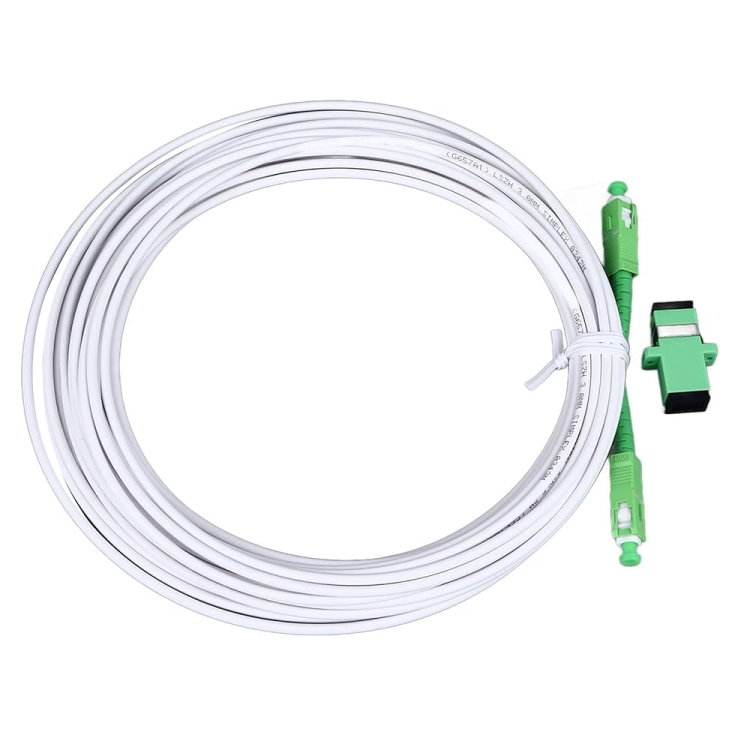-
Posts
495 -
Joined
-
Last visited
-
Days Won
6
Everything posted by garrymartin
-
Personally, I'd scrap the PIR and Impey Waterguard and put 60mm Marmox straight to the slab with tile adhesive (possibly another 10mm on top at 90-degree depending on existing floor height). Stick the UFH mat on top of that. A couple of conduits with temperature sensors in them (one for backup).Self-levelling compound over it (fibre reinforced). Tile on top of that. You'll probably end up very close to the height of your other flooring, and it will be a very straightforward buildup.
-

Groundworks and utility install sequencing
garrymartin replied to sjmtlewy's topic in Project & Site Management
Does your plot have *any* permission on it? If not, you need to start right there. -

Week 28 - Floor tiling, bathrooms, cladding, MVHR, electrics…
garrymartin commented on Benpointer's blog entry in Contemporary build in north Dorset
The fantastic progress and quality results continue! If you've not just been incredibly lucky, and you're able to share, I'm sure everyone would love to know the process you went through to find and appoint your various trades.- 25 comments
-
- floor tiling
- cladding
-
(and 2 more)
Tagged with:
-

Temporary power to the building from our existing supply.
garrymartin replied to saveasteading's topic in Barn Conversions
It was just an example. To be honest, I don't know how they can sell a 25m extension cable with 2.5mm2 cores for that price. Costs more than that to buy just the cable! But heh, it's a UK company, and has both CE and UKCA marking. Might just be a bargain! (NOTE they also sell it as a kit with a 5kVA 110V transformer, so specifically for the purpose @saveasteading is looking to us it) -

Temporary power to the building from our existing supply.
garrymartin replied to saveasteading's topic in Barn Conversions
Something like this; 2.5mm2 3-core with 4 sockets https://www.amazon.co.uk/Portable-Blue-Extension-Lead-Cable/dp/B0FVZH1JQD -

Temporary power to the building from our existing supply.
garrymartin replied to saveasteading's topic in Barn Conversions
The cable used in those is listed as 1.25mm2 - you should go for something much heavier duty. Minimum 2.5mm2 considering the distance and use. -
Have you looked at different brands of pattress boxes? Perhaps another brand has the same layout holes?
-

Trying to match a BS colour with a RAL colour...
garrymartin replied to Crofter's topic in New House & Self Build Design
Take a look at this... https://www.e-paint.co.uk/colour-alternatives.asp?cRange=BS+4800/5252&cRef=18+B+29&cDescription=Raven RAL 7024 seems to be the closest Classic RAL match, but note it only has two stars, which means "close, but distinguishable". I have the RAL K7 Classic fandeck and RAL 7024 only seems to have a very slight blue tinge to my eye. As @Bonner notes, 7015 might also be a match for you, depending on your finish. It's slightly lighter than 7024 but still has that slight blue tinge. -

Trying to match a BS colour with a RAL colour...
garrymartin replied to Crofter's topic in New House & Self Build Design
Do you have a spare piece of the roofing? Take it to a decent paint shop that does colour matching. They will probably have the RAL charts available. -
Great designs by the way. Based on your first design posted, I would have suggested losing the window to the plant room (needed?) and widening the vertical entrance and glazing to balance things out a little on that elevation. Interesting to see that in these designs, there is no plant room window, and in the first alternate, the vertical entrance glazing is widened... 😉
-

Potton homes return as of today
garrymartin replied to Post and beam's topic in General Self Build & DIY Discussion
https://www.linkedin.com/posts/roger-lewis-aba461241_press-release-approved-by-kingspan-timber-activity-7383754952692719616-E9b4 PRESS RELEASE APPROVED BY KINGSPAN TIMBER SOLUTIONS LTD Home@ix Ltd acquires Potton from Kingspan Timber Solutions Ltd Home@ix, the housing innovator redefining affordable, scalable living, has acquired Potton, the heritage homebuilder, from Kingspan Timber Solutions Ltd This strategic move anchors Potton’s craftsmanship and trusted legacy within the Home@ix platform, combining tradition with innovation to deliver smarter, greener, and more accessible housing. Home@ix integrates modern methods of construction., technology, and finance in one seamless solution. With six years of proven operational data, the company has cracked the code on scalable delivery while keeping customers at the centre. From Stylem@ix entry-level homes, to Superm@ix family builds, and premium Ultim@ix by Potton, the platform makes sustainable homeownership both affordable and customisable. Through its finance arm, Moneym@ix, customers benefit from integrated mortgages, green finance options, and upgrade opportunities, making homes more accessible than ever. “The housing market is broken. Home@ix is here to fix it,” said CEO Designate RH Steve Baker. “With Potton’s heritage as our foundation and Home@ix as the tech engine, we’re setting the new standard for modern living.” For further information, visit [website] or contact rogerhome@ixnow.net -

National Grid wants to move Electric meters to your boundary/garden
garrymartin replied to Temp's topic in Electrics - Other
There's a webinar on Youtube from National Grid about the project. It's basically for retrofit. The idea is that when properties need to be upgraded to support EV charging and heat pump usage, they would provide three-phase at the boundary, and then you can cable to the EV charger and heat pump *externally* without having to go into the house and then back out again. They would just disconnect your single-phase cabling to the house, and then reconnect it to one of the phases in the new three-phase boundary location. -

Identify the Swedish screw (and where can I source it?)
garrymartin replied to oranjeboom's topic in General Joinery
Almost certainly a RAMPA screw (not bolt 😉), though I'm not sure what specific type. It's a German brand, but is often used in Swedish (and other countries) staircase manufacturing. https://www.rampa.com/eu/en/RAMPA-STAIRCASE-SCREWS-TYPE-TKH/3490900010100 https://www.junoindustries.eu/en/products/rampa/screws-with-metrical-thread/rampa-staircase-screws-type-tkm.html Maybe give RAMPA a call or send them an email with the photos? If you do, measure the head diameter, and the diameter of the screw, and if there is writing around the top (possibly the screw type), tell them what it says. RAMPA GmbH & Co. KG Call us: +49 4155 8141-0 E-mail: mail@rampa.com -

Week 15 - UFH, screed, and render base coat
garrymartin commented on Benpointer's blog entry in Contemporary build in north Dorset
Such an inspiring blog. Look forward to reading your updates every week 🙂 -
Just to help me understand better, why is that? I thought, in a new-build, there must be enough space for someone in a wheelchair to manoeuvre, and if not, the easiest thing to do is for the door to open outward or slide? It just didn't look like there would be enough room on the plan.
-
WC door on ground floor needs to open outwards I believe.
-

Week 13 - Floor insulation, electricity, battens, and… scaffold down!
garrymartin commented on Benpointer's blog entry in Contemporary build in north Dorset
That looks like some really tidy work. Great to see people taking pride in the work they are doing. -
Oh, OK, didn't know that. That's really interesting. I understand that, as you describe, you essentially have two spurs, rather than a spur feeding two sockets, but I thought you were only allowed one spur from a single accessory; "Only one unfused spur, supplying either a single 1-gang or 2-gang socket-outlet, should be connected to any accessory forming a part of the circuit (Appendix 15 of BS 7671 refers)." https://electricalapprentice.co.uk/connecting-equipment-to-a-socket-outlet-circuit/?utm_source=chatgpt.com#:~:text=Only one unfused spur%2C supplying either a single 1-gang or 2-gang socket-outlet%2C should be connected to any accessory forming a part of the circuit (Appendix 15 of BS 7671 refers). But then Appendix 15 of BS 7671 only states that "an unfused spur should only feed one single or one twin socket-outlet only" - it doesn't explicitly say you can only have one unfused spur from a single accessory, even if that is commonly accepted...
-
But there is already a spur (C1) off C, so it isn't permissible to also add a FCU spur feeding an additional socket (C2). Without seeing the cable routes, these appear to be the two easiest solutions: 1) disconnect C1 from C, add the FCU as a spur next to C, and then connect both C1 and C2 to the FCU 2) insert the FCU into the ring by disconnecting the cable between C and D, connecting that cable to the FCU along with a new cable between the FCU and C. You can then add as many extra sockets as you like off the FCU B1 and D1 are fine - you can add a single spur off an existing socket on a ring.
-

Containment for fibre... Improvised.
garrymartin replied to FuerteStu's topic in Networks, AV, Security & Automation
Should be fine. Just bear in mind that if it is fibre, it may be a pre-terminated cable of a particular length, so the inside diameter of your PEX needs to be sufficient to take the connector, and the bend radius you employ needs to be appropriate to the connector length too. I installed 20mm flexible conduit from the external box (City Fibre in my case) to my internal comms cupboard and we just fished the cable through when they did the install. No issues. -

Can't connect the SWA cable. Practical help please.
garrymartin replied to saveasteading's topic in Power Circuits
Not that it will help now, but going into a plastic box, potentially outside, I'd always go with the correct sized Storm gland... https://www.electricpoint.com/swa-storm20s-lsf-armoured-cable-glands-m20-20mm-ip68.html -

Economics of DIY and Self Building
garrymartin replied to Gus Potter's topic in General Self Build & DIY Discussion
I find the problem with economics and market value generally has much more to do with plot prices than with how much work you do yourself. Inflated land costs often *lead* to a requirement to do more work yourself to make the sums add up. -

Week 8 - And pause... or not.
garrymartin commented on Benpointer's blog entry in Contemporary build in north Dorset
+1 very clever




